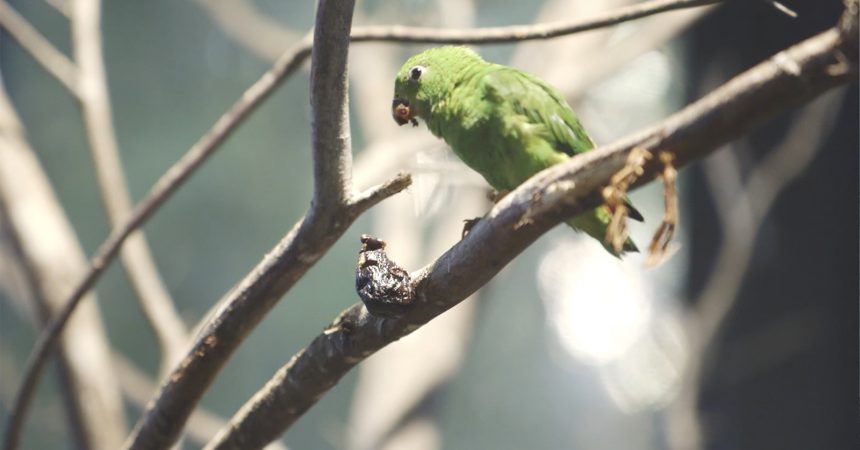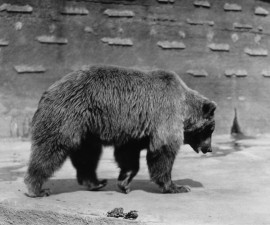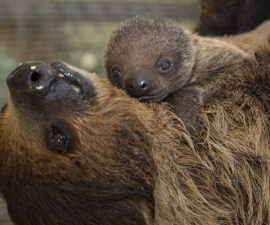Sometimes we forget that zoo animals can get sick, have accidents, or be born with physical challenges. The latter is the case with a blue-crowned hanging parrot that hatched at the Zoo’s Tiger River last February.
Blue-crowned hanging parrots nest in tree cavities. They lay their eggs and raise the chicks inside the cavity for about one month. After that, the nestlings emerge to join the rest of the flock. This year, we had a clutch of two birds in one cavity, or nest box. The parents took great care of the youngsters, and they grew strong.
We kept a close eye on them and replaced the dirty shavings in the nest box with fresh shavings about once per week. A few days before we expected them to leave the box, we removed the chicks, placed leg bands on them for identification, and collected a few feathers to send to the lab for sexing.
But while handling one of the birds, we discovered that he was missing 3 of his 4 toes on one foot! He could have been born this way, or his nest mate may have nibbled his toes off. From the look of his foot, I think he was born this way, but we will never know for sure.
When it came time to fledge, this little bird not only had to learn how to fly and how to properly interact with the rest of the flock, but now he had to learn how to land and perch with only one foot to grip with!
Feet and toes are obviously important to hanging parrots. They actually hang upside down to sleep, bathe, and, well, just because. They grip their food in one foot while standing on the other. I have even seen them fly across the exhibit and land on a perch upside down!
The bird with the missing toes, “Copper” (named for the color of his leg band) slipped off a few perches, lost his balance several times, and stumbled around when on the ground. But every day he got stronger, more confident, and more stable. At first, he would use his “main” foot to rest and perch—he was often seen hanging upside down from his one full foot.
But with practice, he learned to use his “one-toed” foot like a hook. Now, he hangs from it, swings on branches with it, rests and perches on it, and many times isn’t using the other foot at all. It has been gratifying to see him adapt and learn how to maneuver through his exhibit despite his “handicap”.
Next time you visit Tiger River, stop by and try to find him. It won’t be easy because now, he’s just like everyone else.
Cindy Morford is a bird keeper at the San Diego Zoo.




